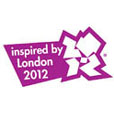1948 - London / 1952 - Helsinki
| STAN COX | Sport: Marathon |
|---|---|
| Interview date: May 2008 | Olympic Years: 1948 and 1952 |
| Go To Transcript Chapter | ||
Download transcript (Adobe PDF)

| STAN COX | Sport: Marathon |
|---|---|
| Interview date: May 2008 | Olympic Years: 1948 and 1952 |
| Go To Transcript Chapter | ||
Download transcript (Adobe PDF)